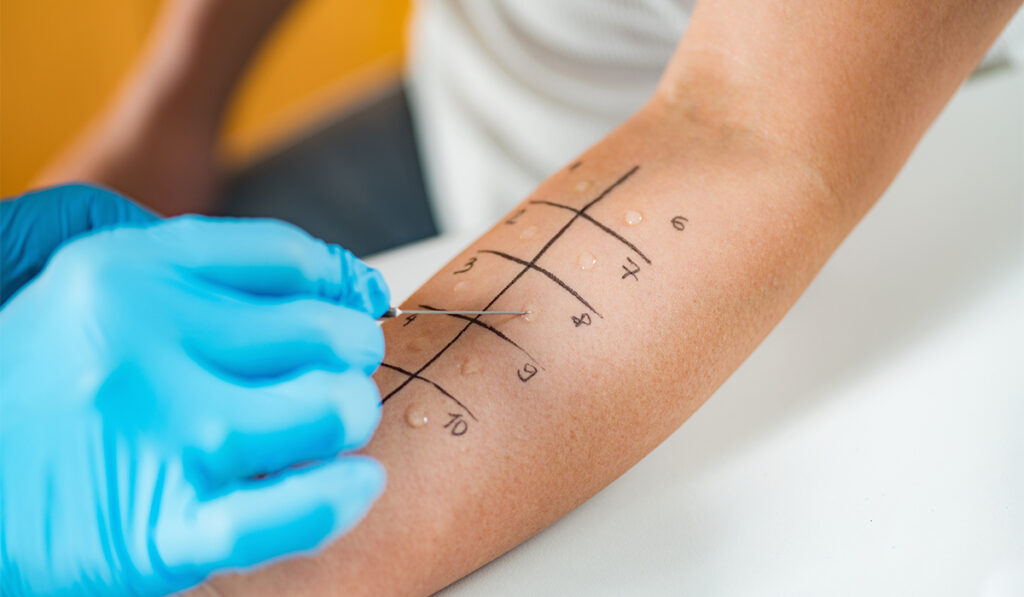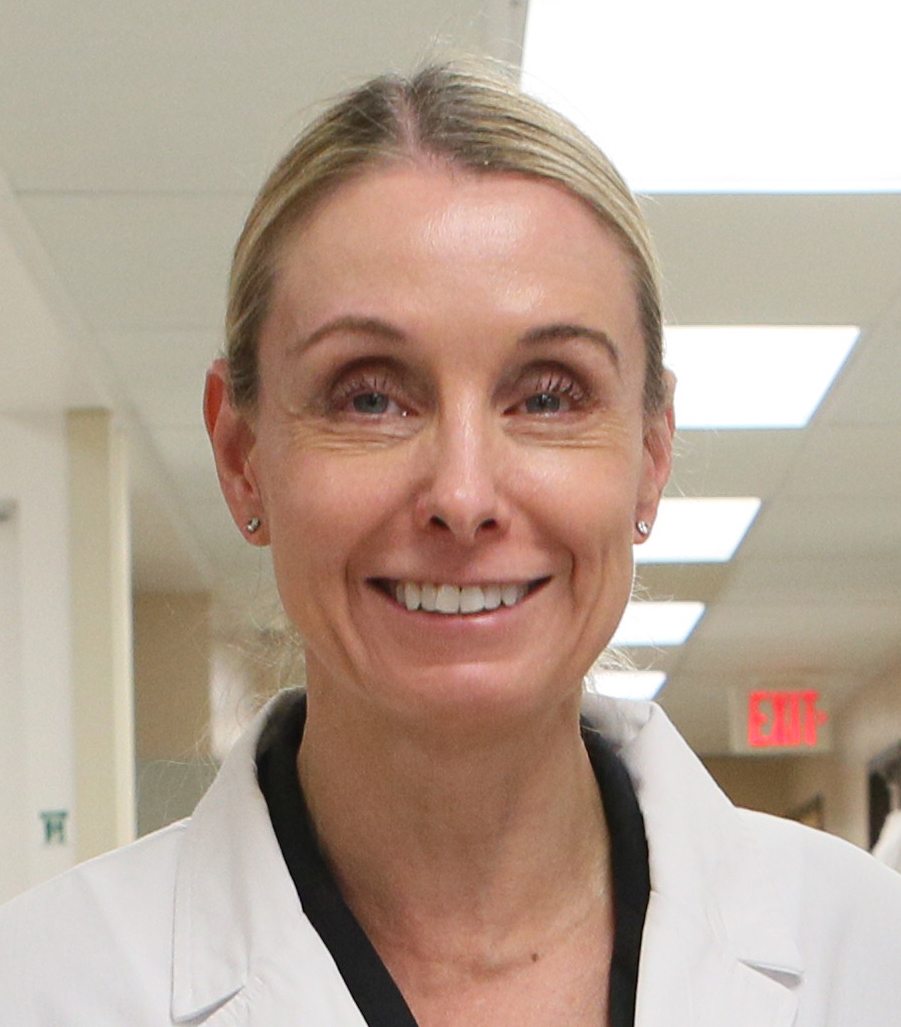Key Takeaways
- The Center for Drug Safety and Immunology is using a multidisciplinary approach and advanced technologies to predict, prevent and develop more targeted treatments of severe immune-mediated adverse drug reactions, making drugs safer and more accessible.
- The center’s mission relies on collaboration among multiple specialties to serve diverse populations, highlighting how important it is to engage with patients and communities to address the complexity of drug safety and improve clinical practice.
The Center for Drug Safety and Immunology at Vanderbilt University Medical Center is brainchild of founding director Elizabeth J. Phillips, M.D., who pioneered drug-reaction research in HIV patients and continues to investigate the causes and treatments of immune-mediated adverse drug reactions.
Phillips, holder of the John A. Oates Chair in Clinical Research at VUMC, believes better understanding of adverse reactions allows offer diagnosis and the chance to provide more targeted patient therapies . An international leader in drug safety, Phillips played a key role in the research that led to the identification of HLA-B*57:01 as a genetic marker for hypersensitivity to abacavir, a primary HIV treatment.
Since translated into clinical practice, the genetic test is now routinely made available to HIV patients before they are given a abacavir prescription.
The steps leading to that breakthrough – which harnessed the power of genomics, multidisciplinary approaches and translational science – now is applied on an even larger scale to improve drug-safety across the board. The investigators also are looking closely at the most severe hypersensitivity reactions, like Stevens-Johnson Syndrome and toxic epidermal necrolysis (TEN), rare but treatment-limited illnesses that are typically triggered in adults by a drug reaction.
Phillips recently sat down with Discoveries in Medicine to talk about the center’s mission and the challenges involved in improving drug safety. Below are excerpts from that conversation:
Inspired by Disease Research
Discoveries in Medicine: How did your HIV research set the stage for the Center for Drug Safety and Immunology’s work?
Phillips: My main motivators started when I was finishing training in infectious diseases. It was the ’90s, and patients were dying of HIV. The drugs used to treat HIV had pretty severe adverse effects and drug interactions. No one really seemed to understand them, and there wasn’t a clear pathway to deal with them. That was a problem to solve, and it got me thinking about how to address adverse drug reactions in other contexts, as well.
Thankfully, HIV treatment approaches are much improved now and their improved safety was at least one factor that made it possible to create multi-drug single tablet regimens. But this work was in the background for me as I became quite active in following the motto of “making safe drugs more accessible and making dangerous drugs more safe.”
Discoveries: It sounds simple, but I suspect there’s a lot behind that statement. Can you explain?
Phillips: One example would be the abacavir HIV drug reaction. Identifying the underlying mechanism and developing a prevention tool to make the drug safer gave us a “roadmap” that could then be applied to new adverse drug reactions.
Making safe drugs more accessible is complicated. It gets at some of the most interesting territory for me. When a patient presents with an unknown source of adverse reaction, that can be really difficult to pinpoint – patients might think they are allergic to one drug when they are really allergic to something else, and it could kill them if they are re-exposed.
So, for a sizable proportion of the population the work is helping people get de-labeled for drugs to which they are not allergic and are likely the safer and more efficacious option for them. For other complex medical patients who may be on multiple drugs at the time of an allergic reaction, it is identifying the culprit drug. Patients can have false allergy labels to antibiotics, but antibiotics are also amongst the most common causes of severe life-threatening skin and organ reactions.
It’s been amazingly helpful to have a background in infectious disease to actually understand the drugs, to understand the underlying processes, and to be able to work with the patient population to solve some of these problems. Really, combined, it’s both angles of the problem that continue to intrigue and drive me. There is so much that can be done there.
From ‘Why’ to ‘How’
Discoveries: The center was established in 2018. What are you working on now to position for what’s next?
Phillips: We are pressing toward this deeper understanding of the “why” – why drugs do what they do, so that we understand the “how” – how we can move forward into a future with an understanding at a level that can revolutionize drug development. That’s the dream: to be able to not only understand why the drugs we have right now are causing problems, but also to be able to use that knowledge so that thousands of patients don’t have to experience a bad reaction to find out that they have a hypersensitivity. There has to be a better way.
“We are pressing toward this deeper understanding of the ‘why’ – why drugs do what they do – so that we understand the ‘how.’”
Screening, obviously, is a huge goal. But the reality is that, despite the in-roads we have made in medicine in terms of embracing translational approaches, implementation is still probably the hardest of all the steps. While we have been talking about personalized medicine genetics since the late ’90s and the promise of it is incredible, there is still a big gap when it comes to day-to-day practice. There is such potential, including the ability to serve providers with clinical decision support, but we are just not there yet. That’s another vision of the future that we are working toward.
Patient-Centered Care
Discoveries: The center provides clinical treatment and prevention and supports several large research grants. Plus, you’re educating the next generation of scientists, pulling from a team that includes infectious disease; dermatology; genetic counselors; allergy, pulmonary and critical care; and others. Why such a complex approach?
Phillips: I think it all falls under the umbrella of patient-centered care and patient-centered research. We also make a point to be heavily engaged with the community to stay at the source of information regarding the most pressing issues.
For the last seven years, we have held meetings with community members and survivors of family members who died of adverse drug reactions or because of complications associated with adverse drug reactions and have brought them together with key scientists in the field. We learn about the things that are most important to them and what they’ve had to deal with. It’s been really transformative.
As to the multidisciplinary structure of our staff, the field itself presents both great challenges and great opportunities. Drug safety, especially that pertaining to rare but life-threatening adverse drug reactions, has always felt a bit orphaned, because it’s relevant to everyone but owned by no one.
At our center, we brought everyone together and made it our collective mission. I see things like complexity and patient unmet needs as opportunities. I feel very privileged to have the opportunity to work with a global team of scientists who have the common goal of making drugs safer.




